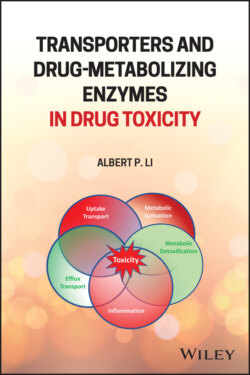Читать книгу Transporters and Drug-Metabolizing Enzymes in Drug Toxicity - Albert P. Li - Страница 55
3.3.1 Drug Metabolism and Toxicity
ОглавлениеCompromised hepatic clearance is believed to be the major mechanism of cerivastatin toxicity. Cerivastatin‐induced rhabdomyolysis occurred mostly in patients coadministered with fibrate, suggesting that the toxicity is a result of interaction between these two administered drugs. Cerivastatin is metabolized by CYP2C8 to hydroxylated metabolites [55], and CYP3A4 to desmethylcerivastatin which is further glucuronidated [56]. Gemfibrozil was found to inhibit the formation of CYP2C8‐mediated metabolite but not the CYP3A4 metabolites in human liver microsomes [57, 58]. Gemfibrozil coadministration was found to greatly enhance plasma cerivastatin concentrations in human patients [59] while potent CYP3A4 inhibitors such as erythromycin and itraconazole had no significant effects [60]. These observations suggest that CYP2C8 plays a more important role than CYP3A4 in the hepatic clearance of cerivastatin.
Rhabdomyolysis is also observed in patients administered cerivastatin alone. Association of CYP2C8 genetic polymorphism and cerivastatin toxicity, however, is not as definitive as that observed with fibrate inhibition of CYP2C8 activity [61]. Patients with rhabdomyolysis administered only cerivastatin and not coadministered with fibrate have been found to have a higher frequency of CYP2C8 polymorphic genes [62], leading to CYP2C8 activity both higher and lower than that for wildtype. Genetic polymorphism leading to lower CYP2C8 activity would lead to slower hepatic clearance, resulting in higher cerivastatin activity, thereby enhancing the likelihood of rhabdomyolysis. Higher CYP2C8 activity should lead to lower plasma cerivastatin concentrations and therefore would not lead to toxicity. It is possible that for these patients, the role of uptake transporter plays a greater role in hepatic clearance than CYP2C8 (see below).
